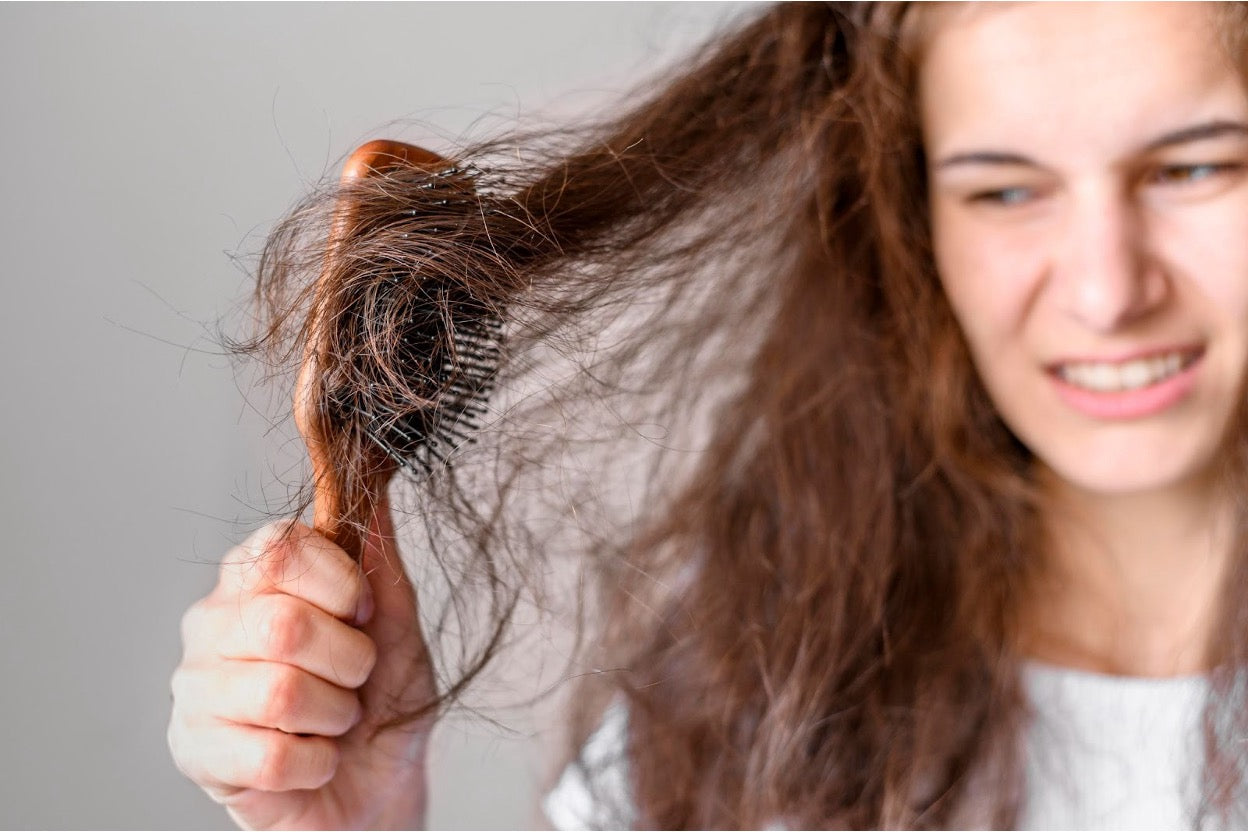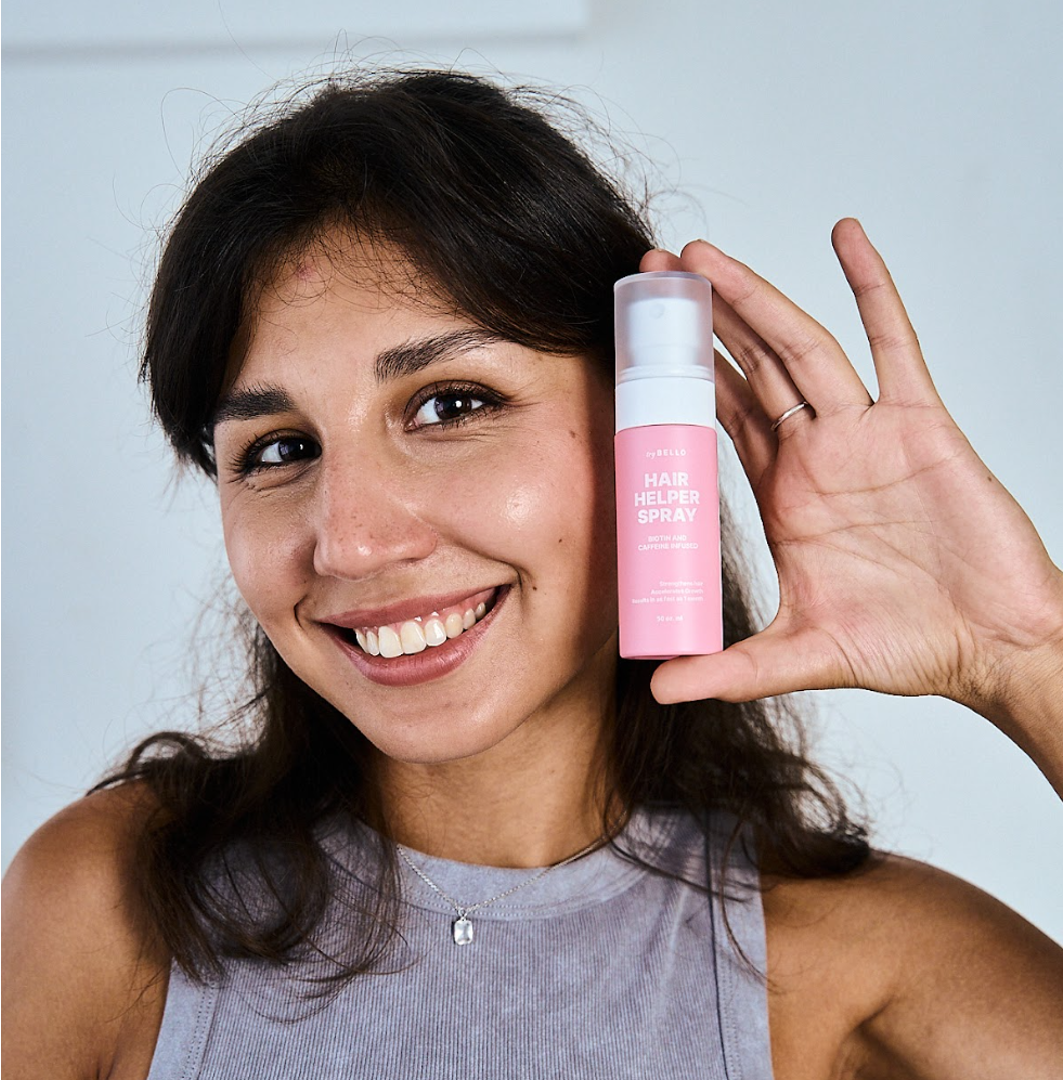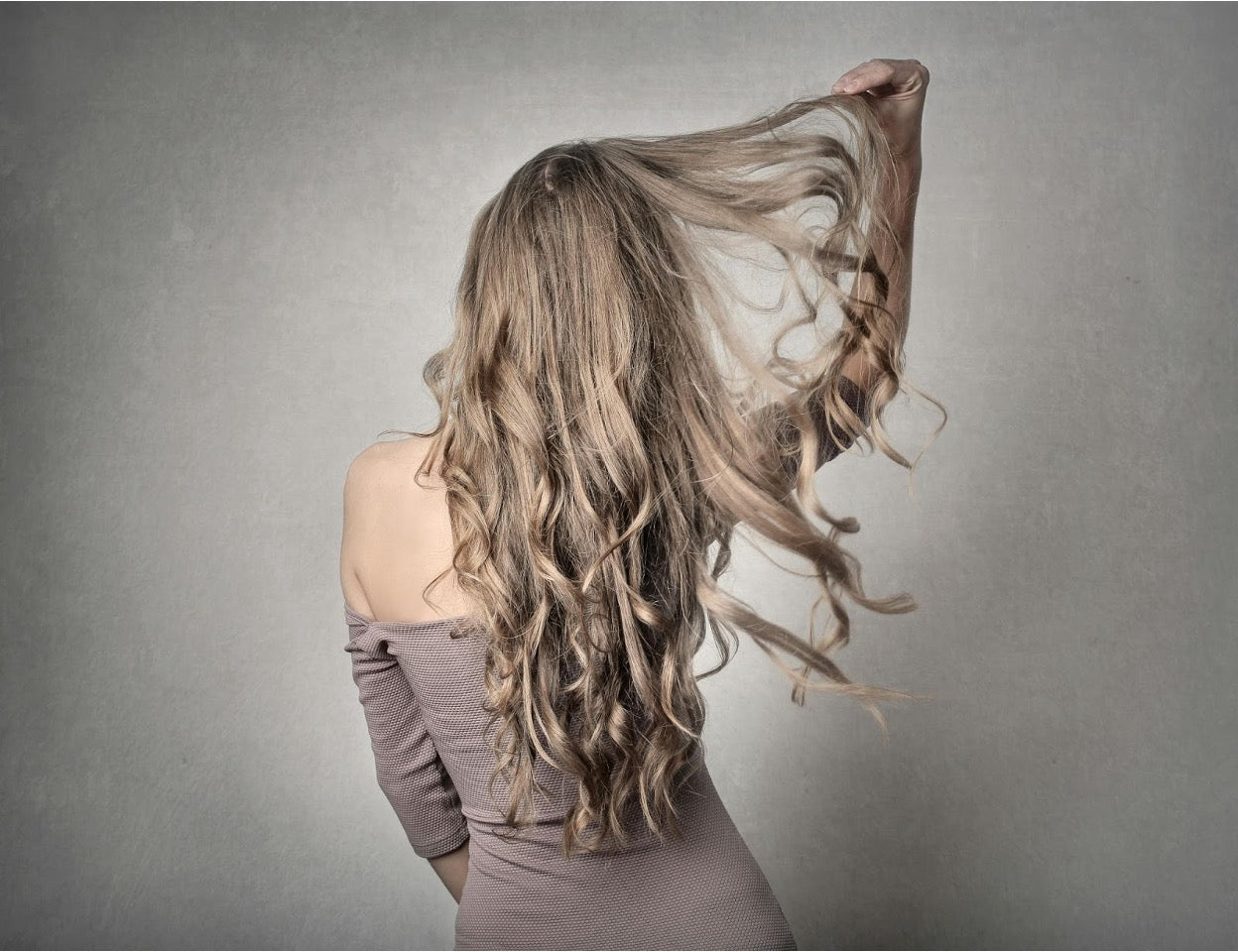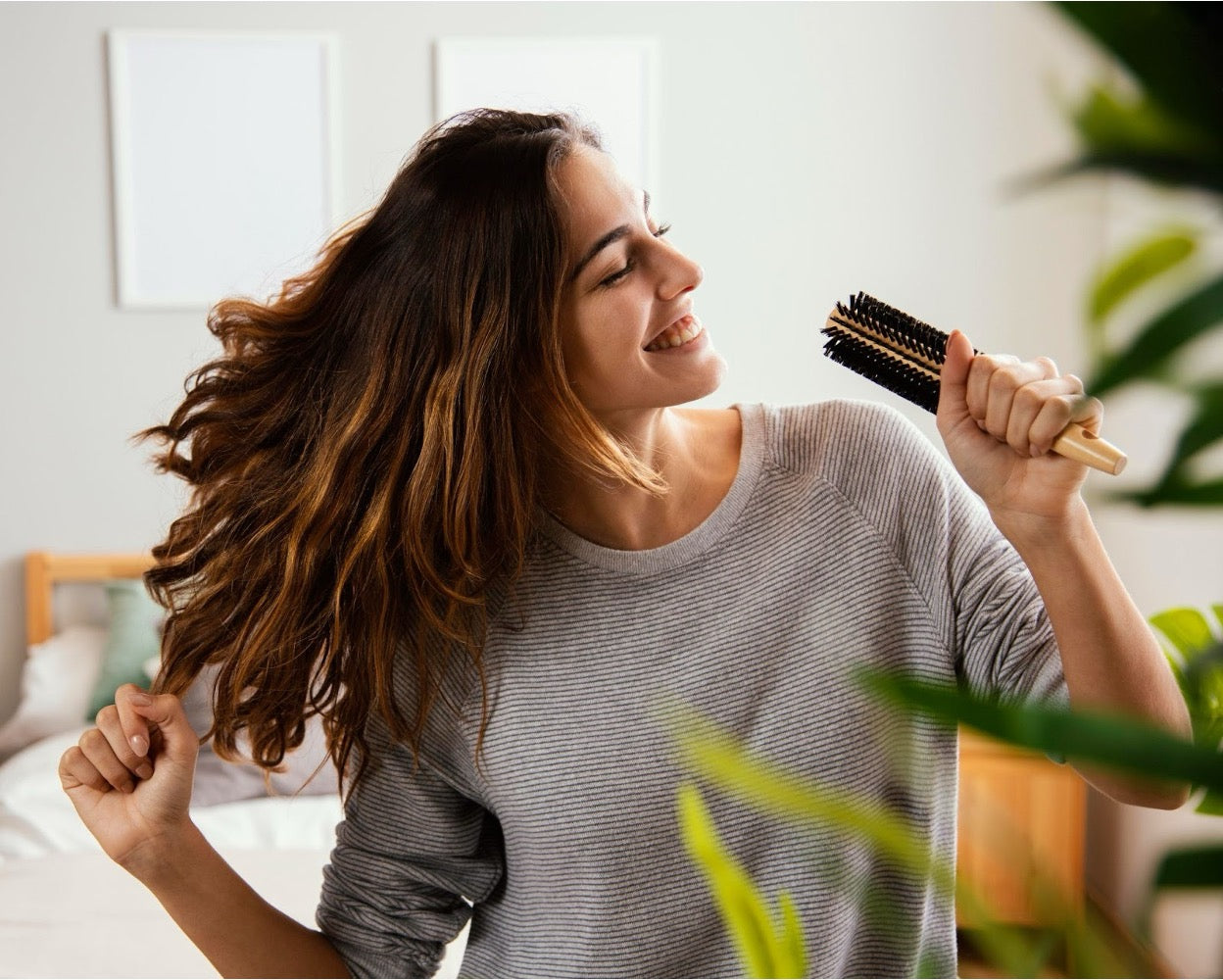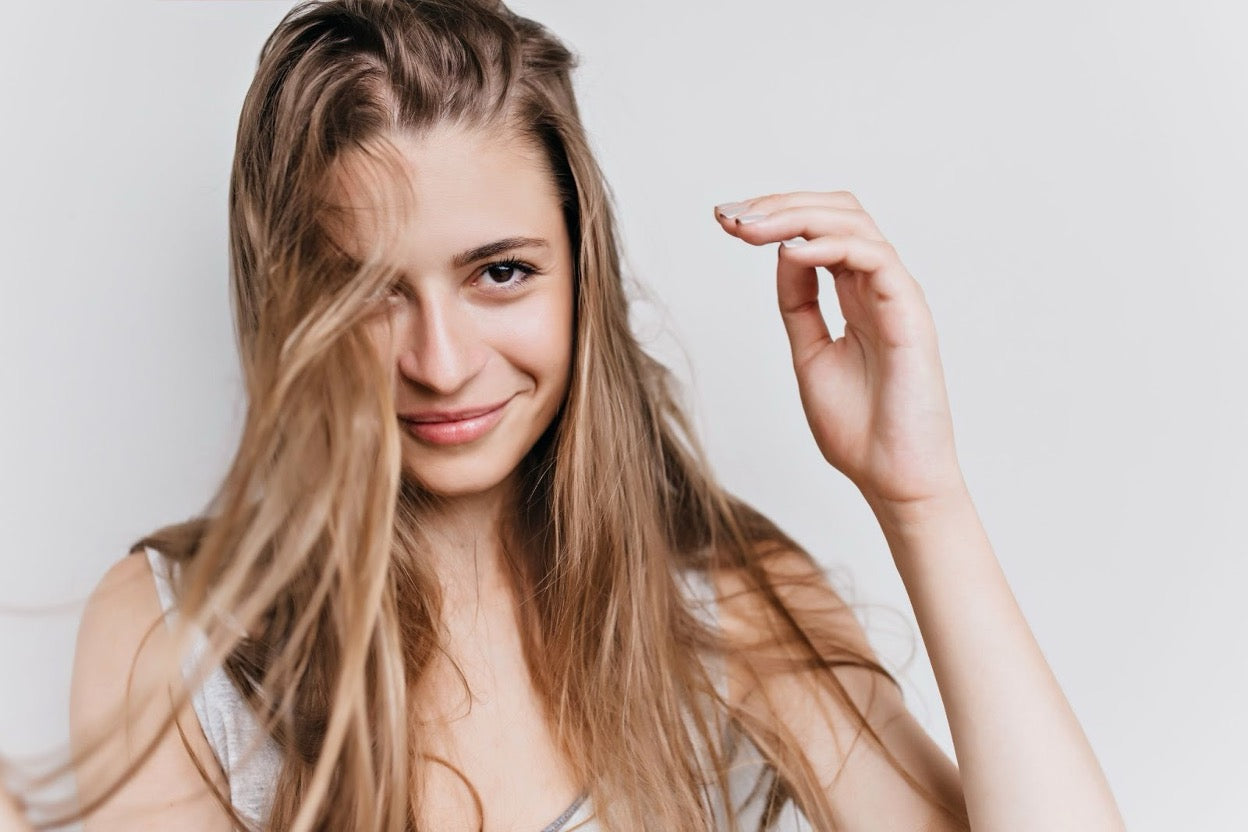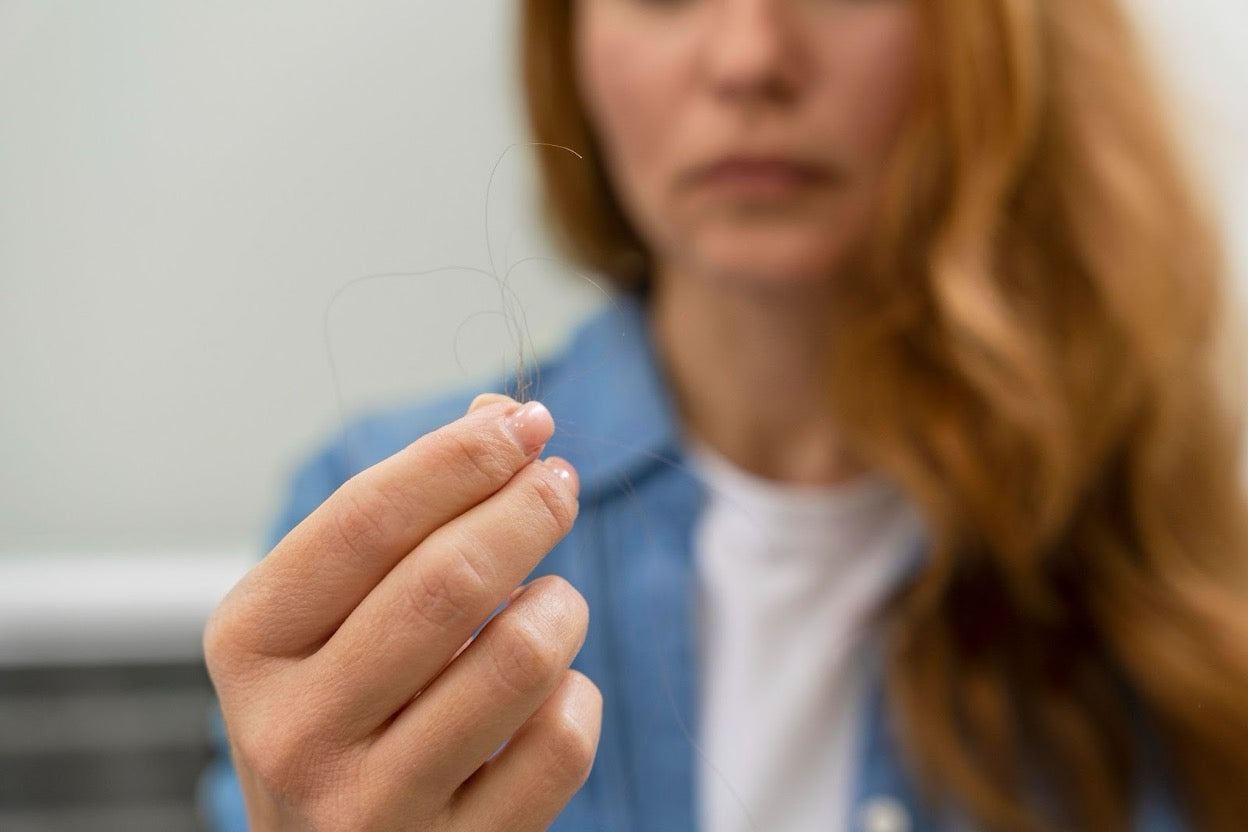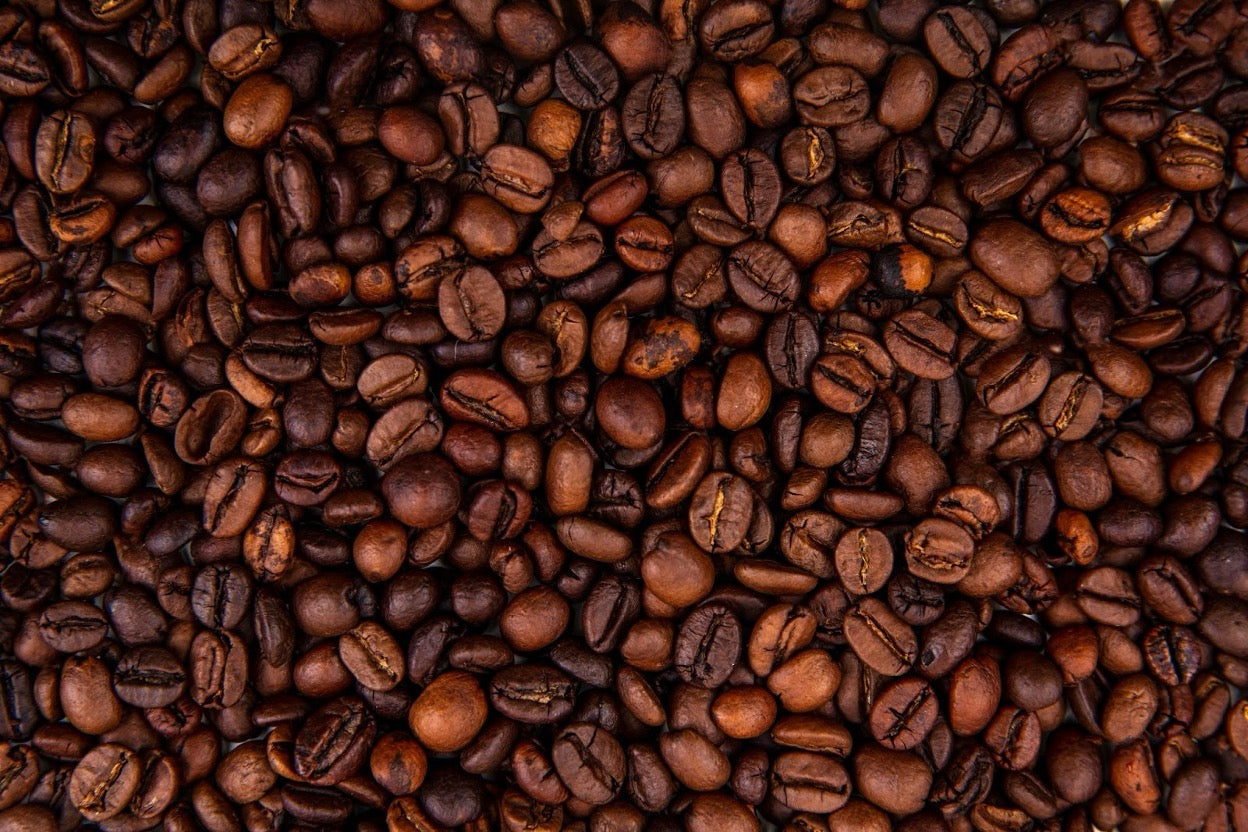Hair Loss vs Receding Hairline: Signs & Treatment for Regrowth
BY TRYBELLO
Jun 17, 2025

Key Takeaways
- Generally, hair loss can occur anywhere on the scalp, while a receding hairline typically forms an "M" shape starting at the temples.
- Stress, genetics, and hormonal changes are common causes of hair loss.
- Early signs of a receding hairline include thinning hair and an uneven hairline.
- Natural remedies, medications, and lifestyle changes can promote hair regrowth.
- Trybello's Hair Helper Spray offers a clinically supported solution with caffeine, biotin, and castor oil that targets the root causes of receding hairlines with visible results in as little as 4–8 weeks.
Understanding Hair Loss & Receding Hairline
Definitions & Differences
Hair loss, also known as alopecia, can occur anywhere on the scalp or body. It can be temporary or permanent and can result from various factors, including genetics, health conditions, or medications. On the other hand, a receding hairline specifically refers to the loss of hair at the front of the scalp, usually starting at the temples.
While hair loss can happen at any age, a receding hairline is often associated with aging. Recognizing these differences helps in identifying the right treatment and care for your hair.
“Doctor-Approved Natural Spray Rapidly Boosts Growth & Thickness.
Why 100,000+ Women Are Switching to The TryBello All-Natural Solution!"
Join over 100,000 happy customers who’ve transformed their hair with our natural, doctor-formulated spray—rated 4.8/5 by more than 40,000 real users.
Proven Natural Ingredients
- • Caffeine Extract – Naturally blocks DHT and boosts blood flow to hair follicles
- • Biotin – Absorbs directly through the scalp for maximum results—no pills needed
- • Castor Oil – Soothes inflammation and locks in deep, lasting moisture
- • Rice Water Extract – Packed with proteins and minerals to strengthen hair and reduce shedding
Get Visible Results in 12 Weeks
- • Up to 45% increase in hair thickness
- • Reduces shedding and unclogs hair-draining nightmares
- • Supports regrowth in thinning areas
- • Leaves hair soft, shiny, and full of life
Ironclad 120-Day Growth Guarantee
No results after 4 months? Get 100% of your money back—no questions asked.


★★★★★
I started using this twice a day because I noticed my hairline receding. Didn’t pay attention to track results, now my stylist told me my hair has grown a lot since my last root touch up. I'm impressed! - Bailey

Recognizing Signs of Receding Hairline

Knowing the signs of a receding hairline is the first step in tackling it head-on.
Early Indicators
One of the first signs of a receding hairline is a noticeable thinning at the temples. You might observe that your hairline is becoming more uneven or that your forehead appears larger.
Progression Patterns
As the hairline recedes, it typically forms a distinctive "M" shape. This pattern is most commonly seen in men but can occur in women as well. The progression can vary greatly from person to person.
Impact on Appearance
A receding hairline can significantly alter your appearance, affecting how you perceive yourself and how others perceive you. This change can impact your confidence and self-esteem.
Addressing hair loss and receding hairlines with the right information and treatments can help you regain control and confidence.
Effective Treatments for Receding Hairline
Natural Remedies
Natural remedies offer an excellent starting point for those seeking to promote hair regrowth without medical intervention. Several plant-based treatments have shown promising results in improving scalp health and stimulating follicle activity.
The application of essential oils like rosemary and peppermint has demonstrated effectiveness in stimulating hair growth through improved circulation. These oils work by increasing blood flow to hair follicles when massaged gently into the scalp, delivering vital nutrients and promoting regrowth.
Medications
For those who need a more potent solution, medications can be highly effective. Minoxidil, available without prescription, comes as a topical solution applied directly to problem areas on the scalp. It works by extending the growth phase of hair follicles and increasing follicle size, resulting in thicker, more robust hair growth over time.
For men specifically, finasteride provides an oral treatment option that addresses the hormonal causes of hair loss. This prescription medication inhibits the conversion of testosterone to dihydrotestosterone (DHT), the hormone primarily responsible for male pattern baldness, leading to significant improvements in hair density and preventing further recession when taken regularly.
Surgical Options
Hair transplantation has become increasingly sophisticated, offering natural-looking results for suitable candidates.
Modern hair transplant procedures involve carefully relocating healthy hair follicles from donor sites (typically the back and sides of the head) to balding areas. These transplanted follicles retain their genetic resistance to the factors causing hair loss, resulting in permanent growth in previously thinning regions.
Lifestyle Changes
Besides specific treatments, lifestyle changes can play a critical role in managing a receding hairline. For example, eating a balanced diet rich in specific vitamins and minerals directly supports follicle function and hair structure.
Also, regular physical activity contributes to hair health by improving circulation throughout the body, including the scalp. Even moderate exercise for 30 minutes most days ensures adequate blood flow, delivers nutrients to hair follicles, and removes waste products.
Preventive Measures for Hair Loss
Diet and Nutrition
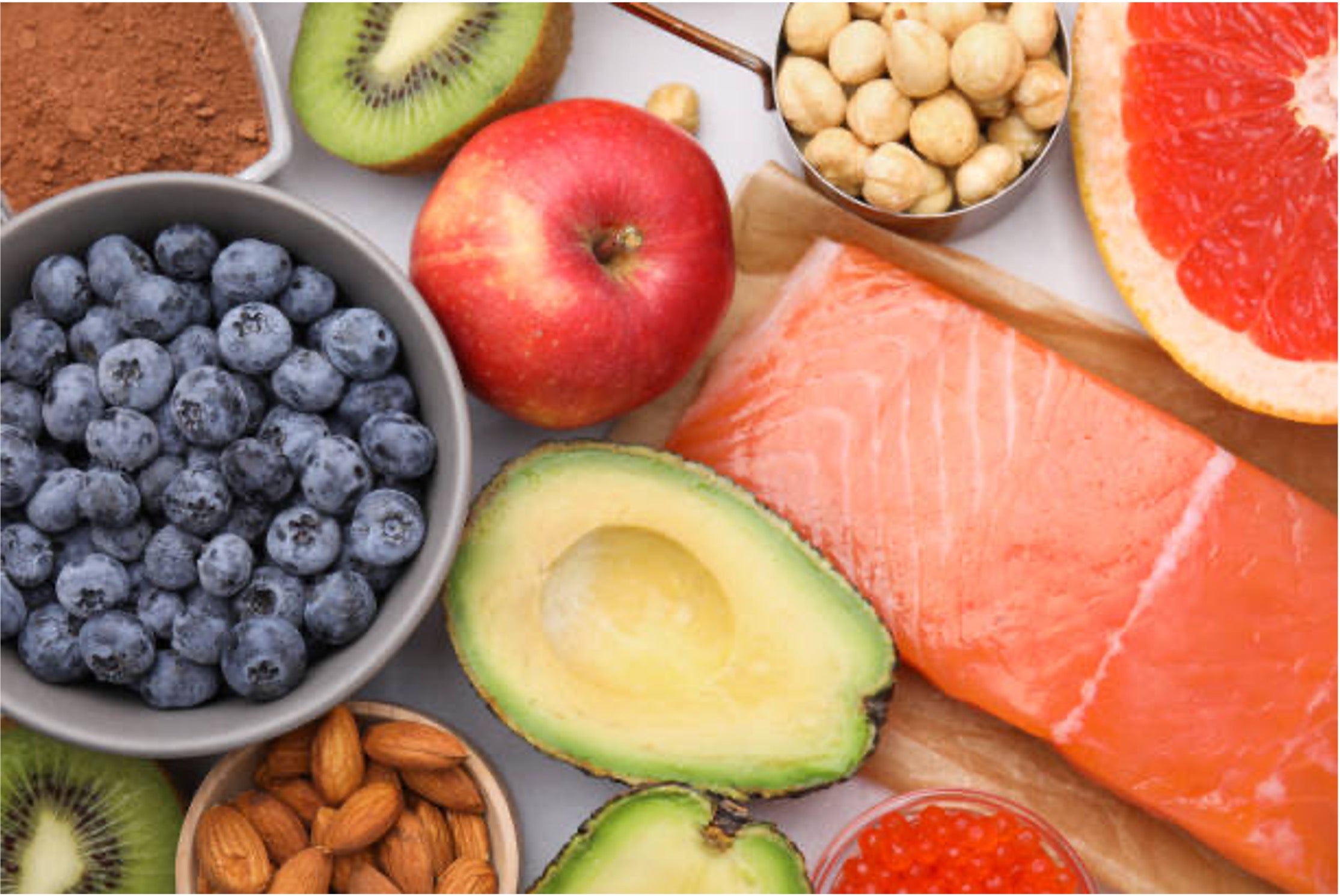
A nutrient-dense diet forms the cornerstone of preventive hair care.
Hair follicles require substantial protein for growth and repair, making lean meats, eggs, legumes, and plant-based proteins essential dietary components.
Additionally, antioxidant-rich foods containing vitamins A, C, and E help combat oxidative stress that damages follicles, which is why berries, nuts, leafy greens, and fatty fish should feature prominently in any hair-protective eating plan.
Hair Care Tips
Proper hair care techniques significantly reduce mechanical stress that leads to breakage and thinning. This includes gentle handling when wet, using wide-tooth combs rather than brushes on damp hair, and avoiding hairstyles that pull excessively on the hairline.
Heat styling is another common source of damage. Minimizing blow dryer, curling iron, and straightener use, or at minimum applying protective products beforehand, preserves hair integrity.
Stress Management
Mindfulness practices and meditation provide accessible tools for reducing stress levels that can trigger hair loss. By engaging in regular exercise, you can reduce stress through endorphin release and improve blood flow to the scalp.
Additionally, prioritizing 7–9 hours of quality sleep nightly enables the body's repair mechanisms to function optimally, supporting cell regeneration in follicles and maintaining proper hormonal regulation essential for healthy hair growth.
Long-term Hair Health Maintenance
Regular Monitoring

Regular monitoring of your hair is crucial in maintaining its health and preventing further loss.
Pay attention to any changes in your hairline, thickness, or texture. Keeping a hair diary can help track these changes over time. This proactive approach allows for early intervention if necessary.
In addition to visual checks, you might consider taking monthly photos of your hairline. This can provide a clear comparison over time and help identify any patterns or progressions that may not be obvious in daily observation.
Consulting Professionals
Dermatologists or trichologists specialize in hair and scalp health and can provide personalized advice based on your specific condition. They can perform tests to determine the underlying causes of hair loss and recommend appropriate treatments.
Adapting Treatment Plans
As your hair health changes, so should your treatment plans. If you notice that a particular treatment is not yielding the desired results, don't hesitate to explore other options. Sometimes a combination of treatments may be necessary to achieve the best outcome.
Trybello: The Natural Solution to Receding Hairline & Hair Loss

At Trybello, we've formulated our Hair Helper Spray to specifically target the unique challenges of receding hairlines and thinning hair.
The synergistic blend of caffeine, biotin, and castor oil in Trybello Hair Helper Spray creates a microenvironment around each hair follicle that counteracts the effects of DHT, the hormone responsible for shrinking hair follicles at the hairline.
Our caffeine compound penetrates the scalp barrier within minutes of application, immediately stimulating circulation and delivering vital nutrients to follicles that have begun to shrink. While our specialized carrier system ensures that biotin, often called the "hair growth vitamin," reaches deep within the dermal layer, where new hair cells are formed.
Don't resign yourself to watching your hairline retreat. Early intervention with Trybello Hair Helper Spray gives you the power to fight back against genetic and hormonal factors with nature's most potent hair growth catalysts. Our 120-day guarantee means you can witness your hairline transformation risk-free!
TRY OUR BELLO HAIR HELPER SPRAY NOW →
Frequently Asked Questions (FAQs)
Trending Topics
See our latests posts #TRYBELLO




